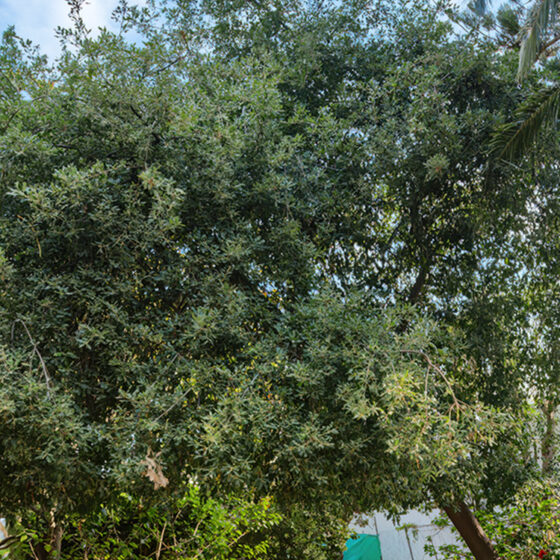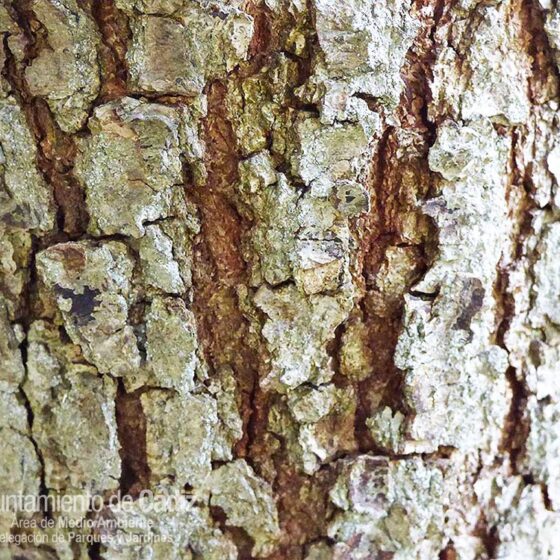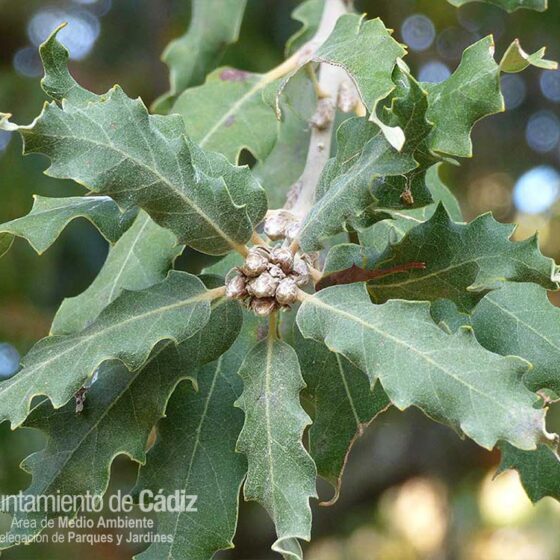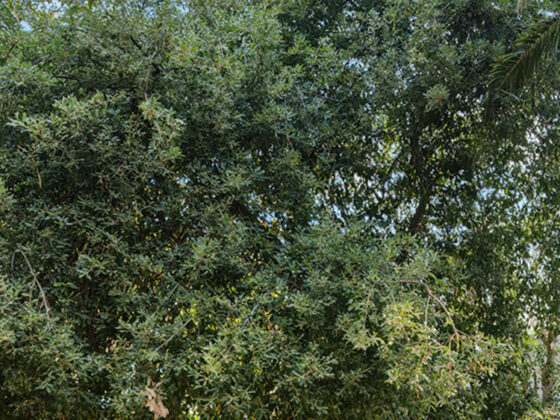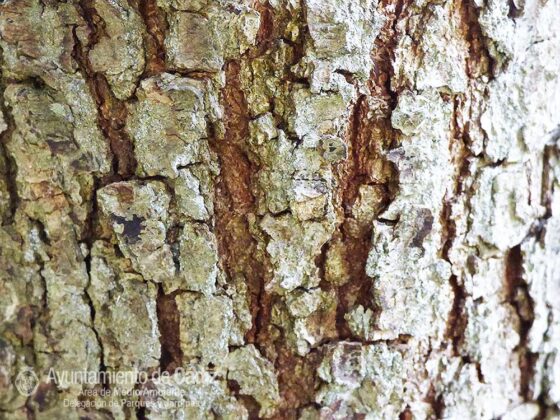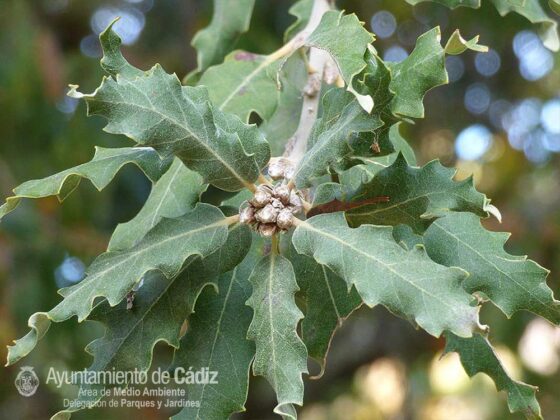The Evergreen Oak
Quercus faginea
Quercus ilex or the Everygreen Oak is a tree from the Fagáceas family. It is a perennial tree native to the Mediterranean region. It is of medium size, although it can appear in shrub form, conditioned by rainfall characteristics or by the terrain in which it is found.
It is a medium-sized tree, which can reach from 16 to 25 metres in height. In the wild, it has an oval crown at the beginning and then widens to be rounded-crushed at the end.
The leaves are perennial and remain on the tree for two to four years. Coriaceous and dark green in the midrib, and lighter on the underside, they are provided with strong spines on the rim when the plant is young, and in the lower branches when adult, without having many leaves on the higher branches. These leaves, which are very hard and leathery, prevent excessive transpiration of the plant, which allows it to live in dry places and with great exposure to the sun.
The bark is smooth and greyish green in the stems; it gets darker as it grows and, at around 15 or 20 years old, it cracks in all directions, leaving a very dark, practically black trunk.
The Evergreen Oak is, like the rest of the species of the Quercus genus, a monoecious plant, although it presents a certain tendency to the Dioecious (Dioecious plants house the male and female flowers on different plants.).
Evergreen oaks are grown mainly for their fruits, the well-known acorns. They are of a dark brown colour when they mature (before, logically green), shiny and with a characteristic dome formed by very tight and dense bracts, that cover approximately a third of their size. They ripen from October to November and some years even in December. The minimum age at which it begins to produce is conditioned by environmental characteristics, being between 15 and 20 years of tree life.
Like the vast majority of phanerogams, the oak establishes symbiotic relationships with various soil fungi forming mycorrhizae. Some species of such fungi, such as those of the tuber kind (Tuber melanosporum, mainly), are highly valued in gastronomy. The high value of them has generated an industry in which Oaks are inoculated and subjected to cultural treatments (tuberculus) to promote the formation of ascoma, which is the well-known truffle.
Oaks are reproduced very well by seed (sowing the acorns), although they are also multiplied by shoots of root and stump. They breed well in all types of soil and from the coast up to 1500 metres above sea level sometimes more, in the form of a shrub (Kermes Oak or Dwarf Oak).
Its natural distribution area is the Mediterranean, since it is found in all the countries bordering it, but only in areas with a Mediterranean climate, since when the climate is rainier and of the Atlantic type, it is replaced by other Quercus species, like Oaks, Gall oaks or Cork oaks. Thus, in Spain it turns out to be the forest species that occupies the most territory: about 3 million hectares of Evergreen Oaks are scattered throughout the peninsula and in the Balearic Islands, except the Cantabrian coastal strip where, without becoming rare, it is much less abundant than in the rest of the peninsula.
Cultivated oaks are generally kept in pastures or meadows, where their acorns are used to feed the cattle and their wood to make excellent coal.
The Oak grows very slowly. When acorns are sown, they germinate easily in a few months, but the young Oak will normally take several years, even decades, to reach 1 metre in height. In shady places, growth is faster, being able to reach up to 10 cm per year.
It is usually preferred to plant acorns directly on the ground to transplant, as it is not a species that responds well to substrate changes. Transplants have a fairly high percentage of casualties, while acorns that germinate successfully give rise to practically indestructible Oaks.
The Oak has been proposed as a national tree of Spain by the well-known tree specialist Rafael Moro, who indicates that a main problem is its scarce presence in Galicia and zero presence in the Canary Islands.
The Evergreen oak is considered a sacred tree, as a symbol of strength, solidity and longevity, in different religious areas from the past, consecrated to the god Zeus in Dodona, to Capitoline Jupiter in Rome or to Perun, of Slavic mythology. According to diverse traditions, the nail of Hercules was made of Oak wood, just like the cross where Jesus Christ was crucified. Abraham receives the revelations of Yahweh near an Oak tree.


